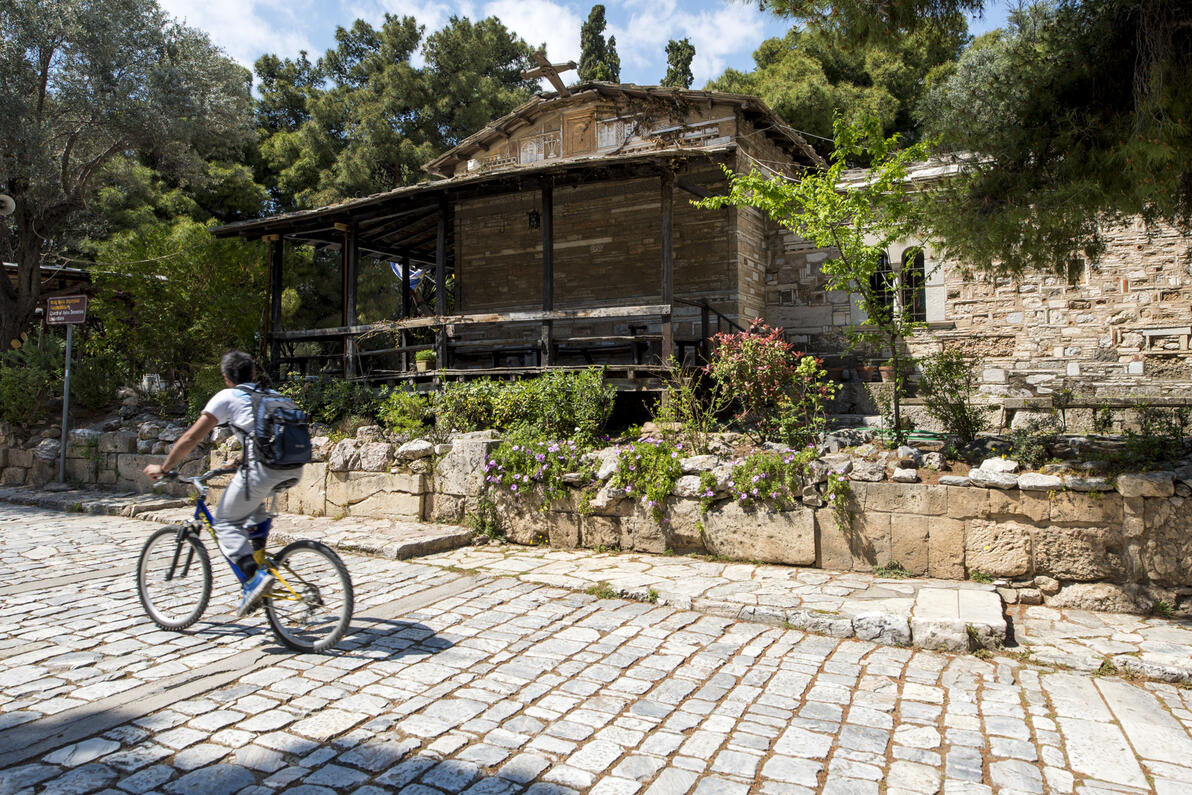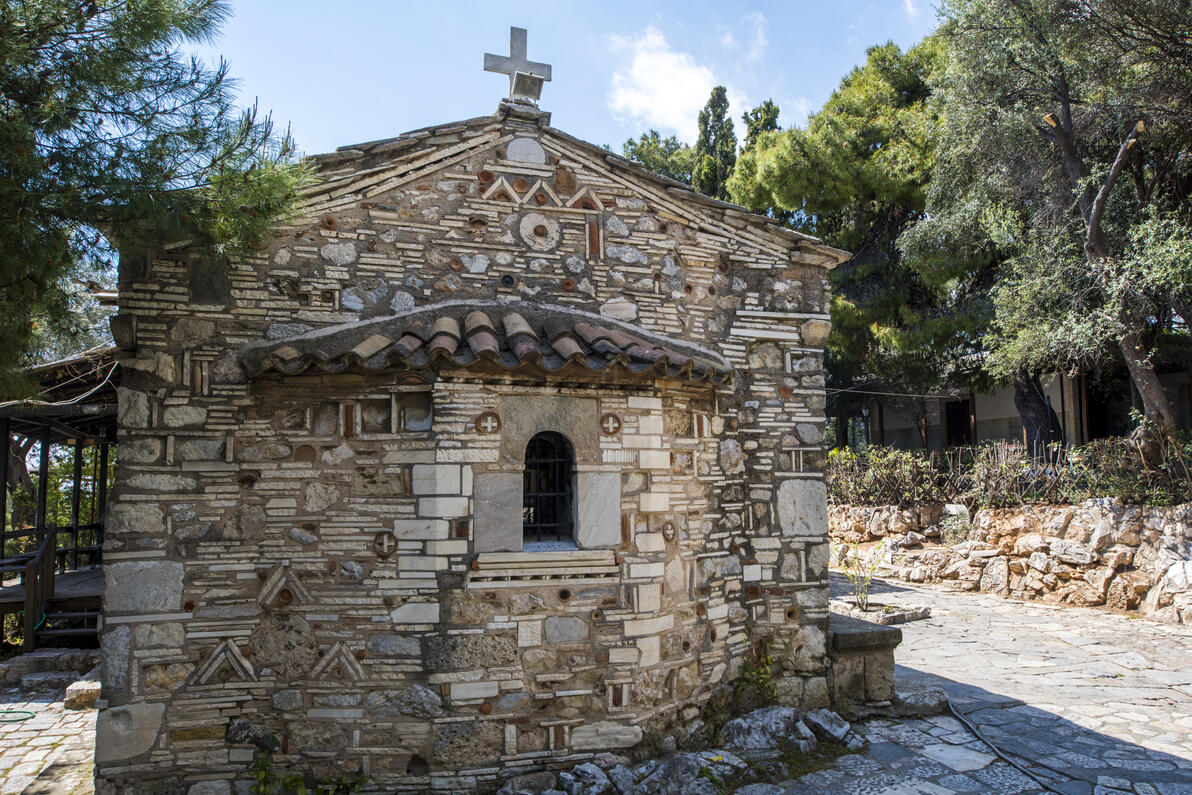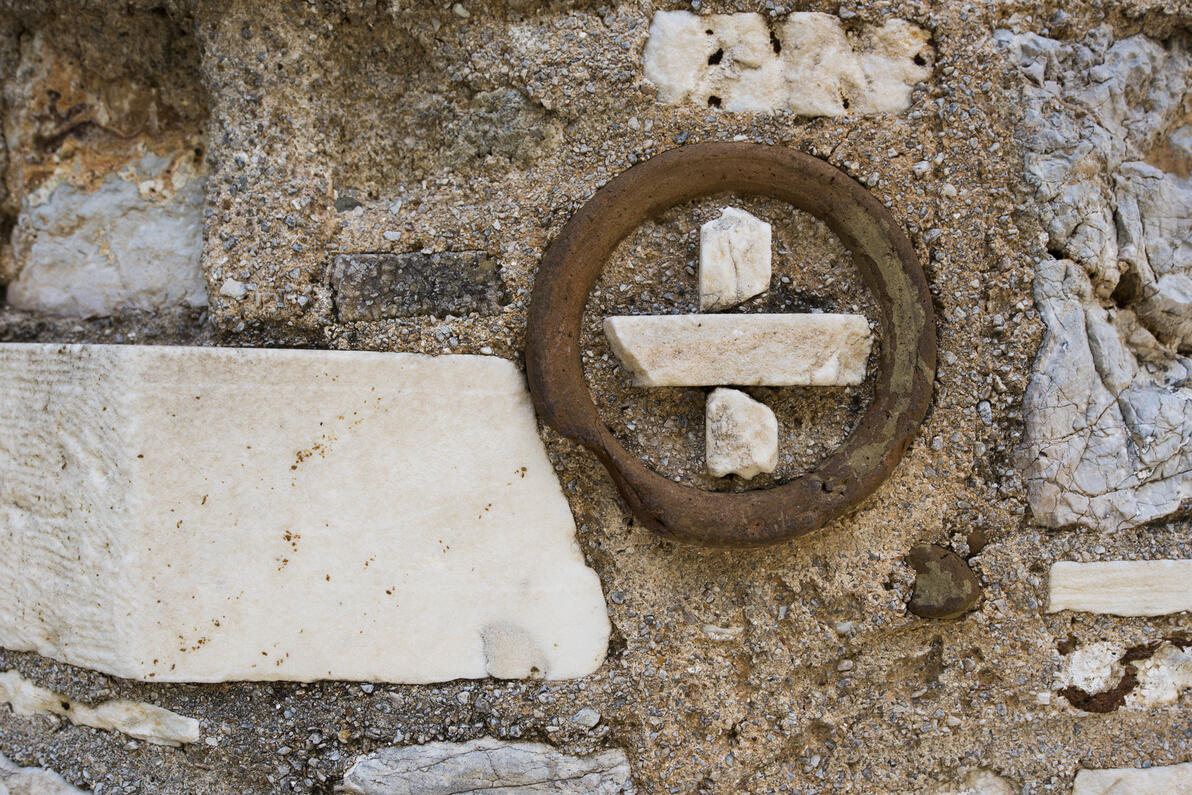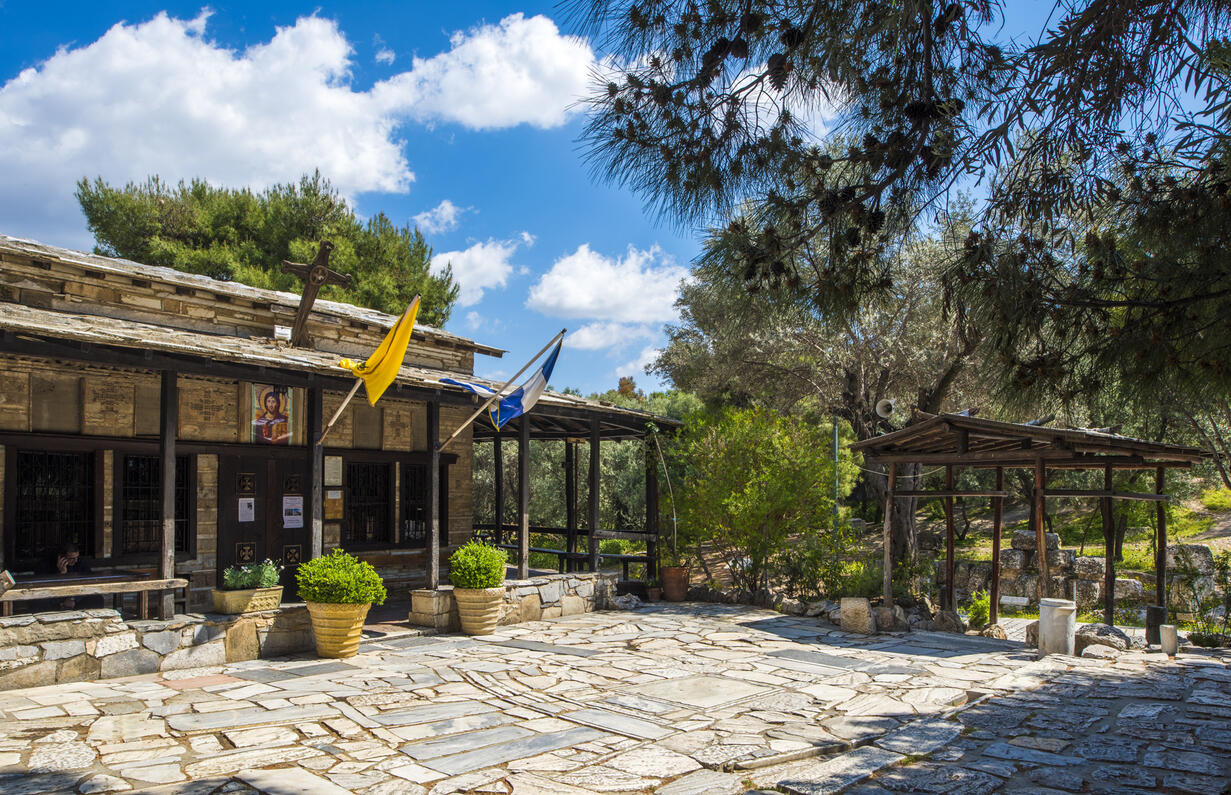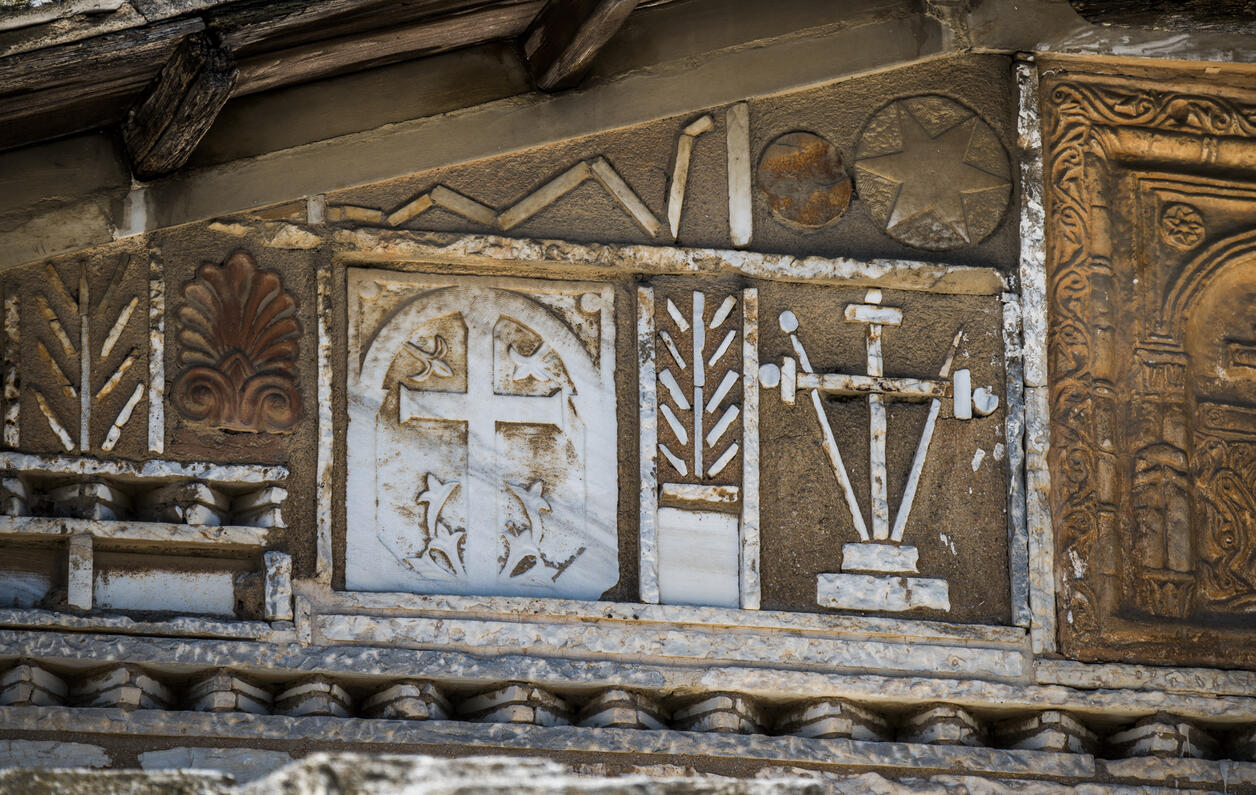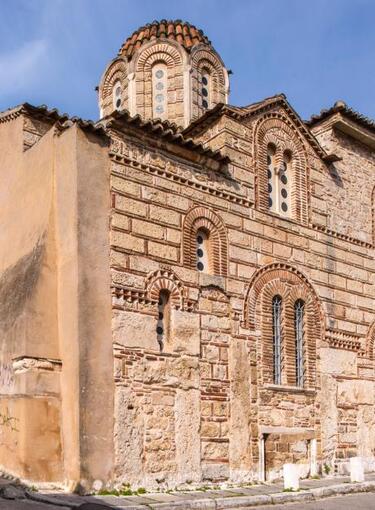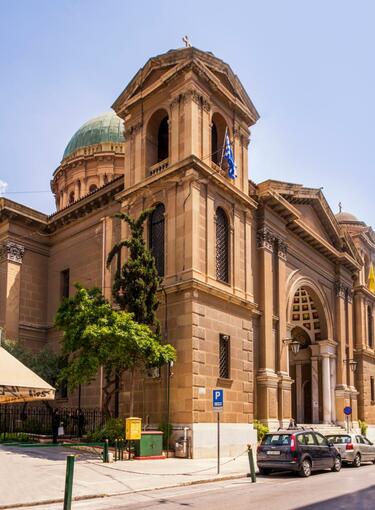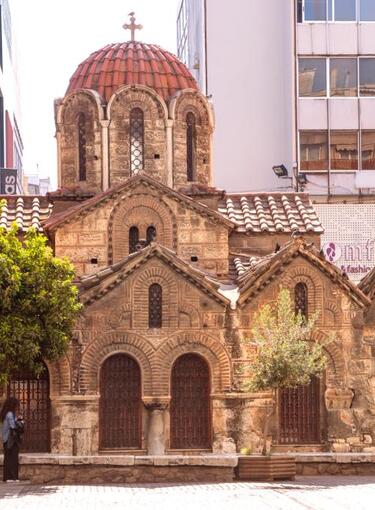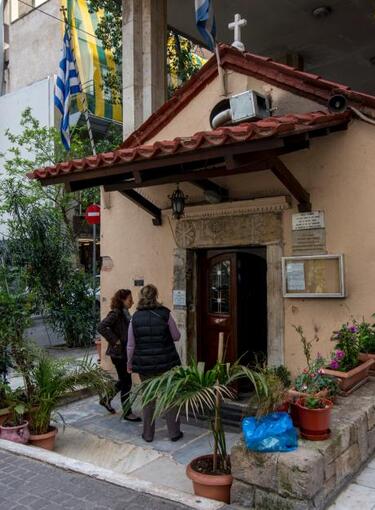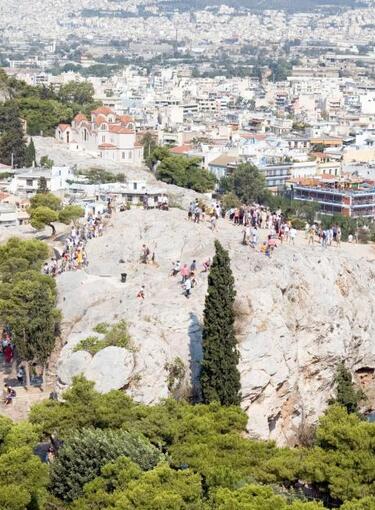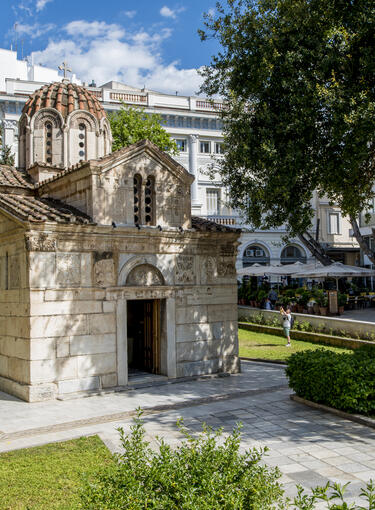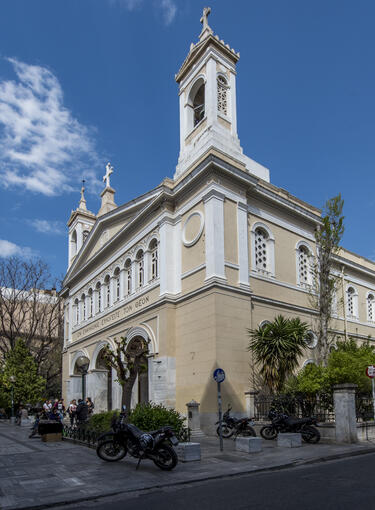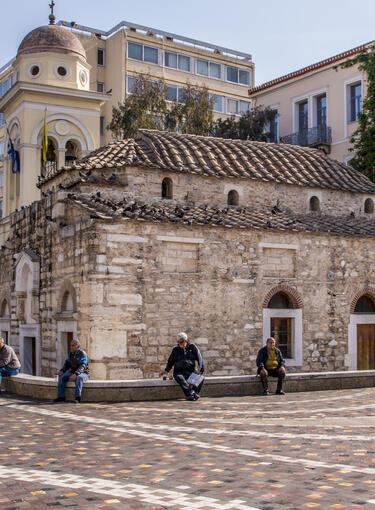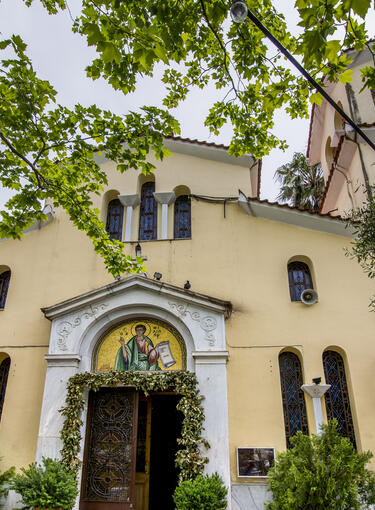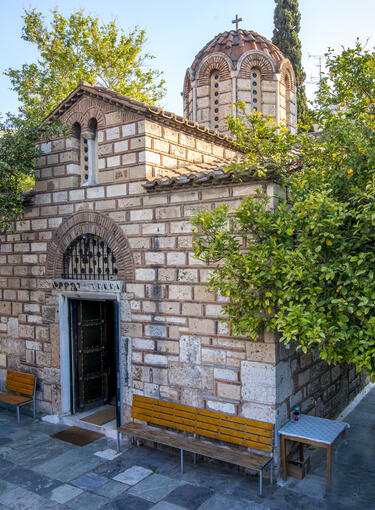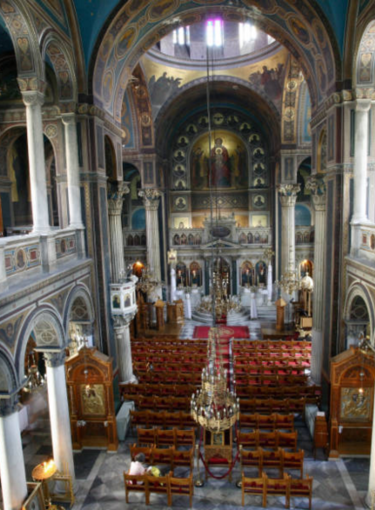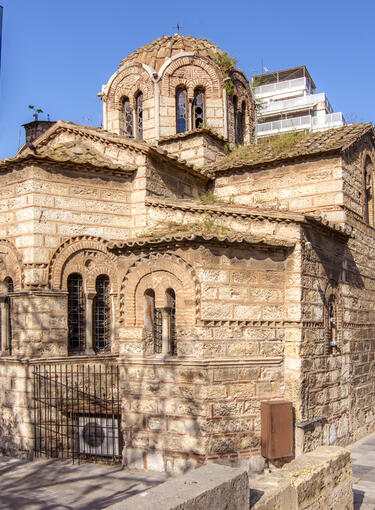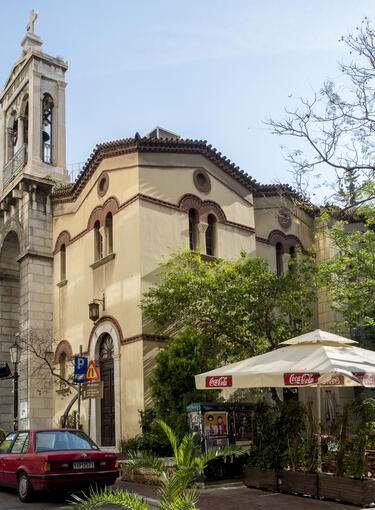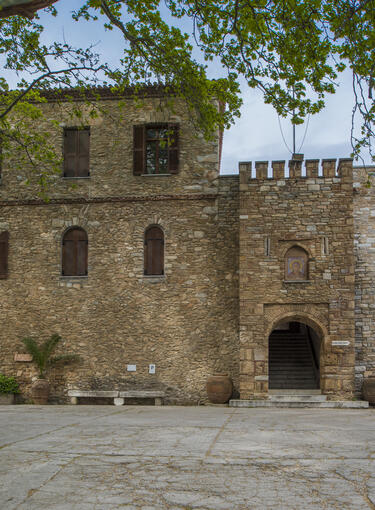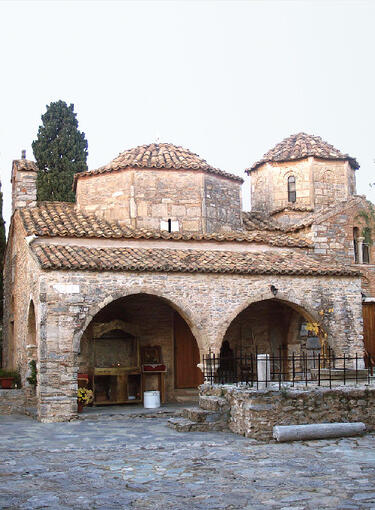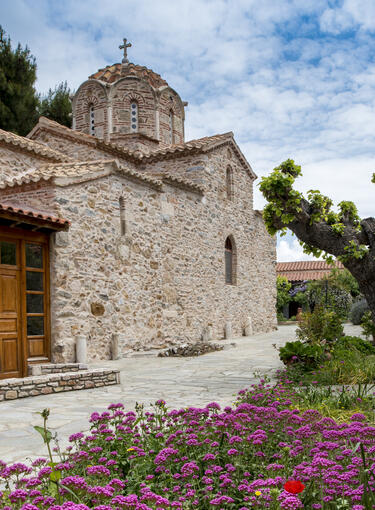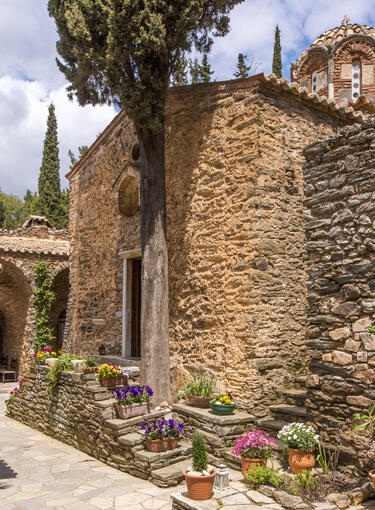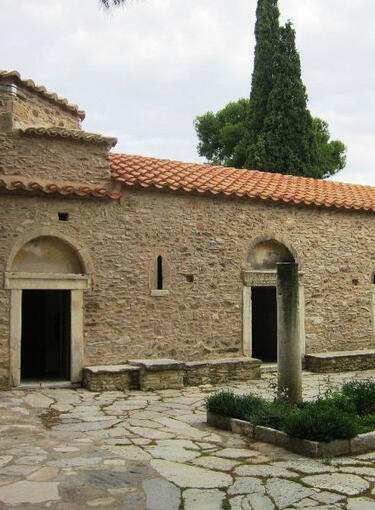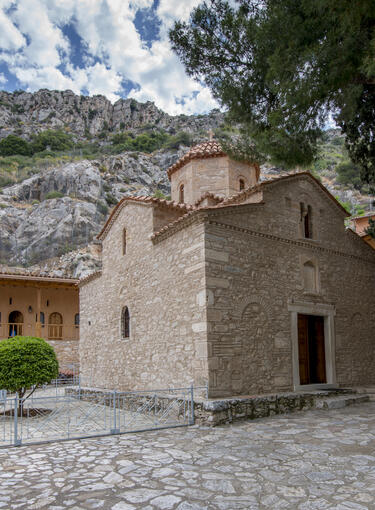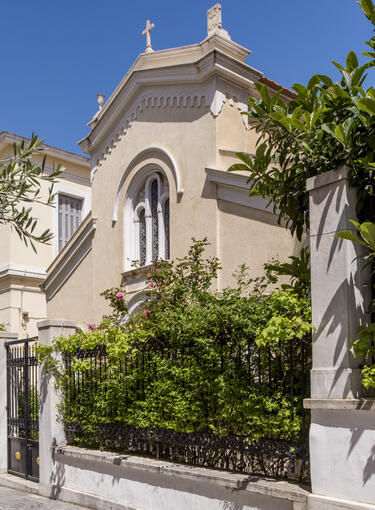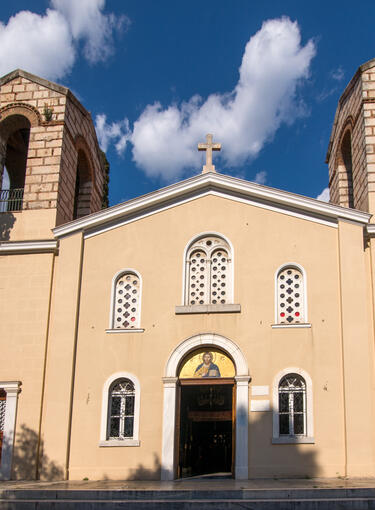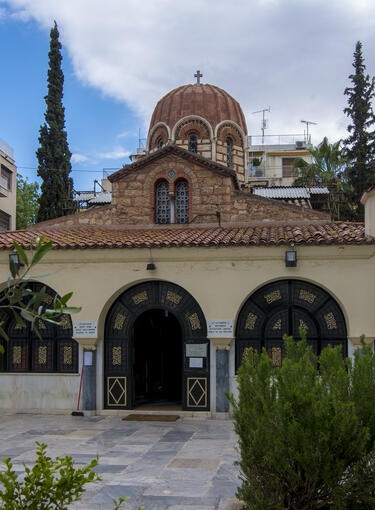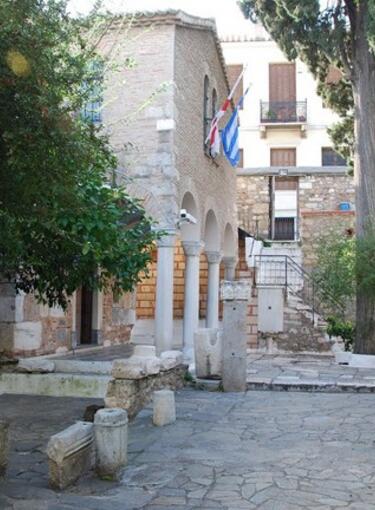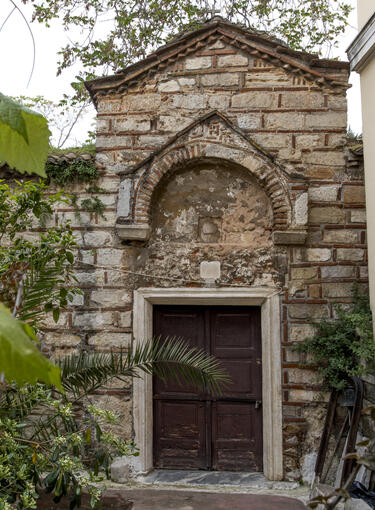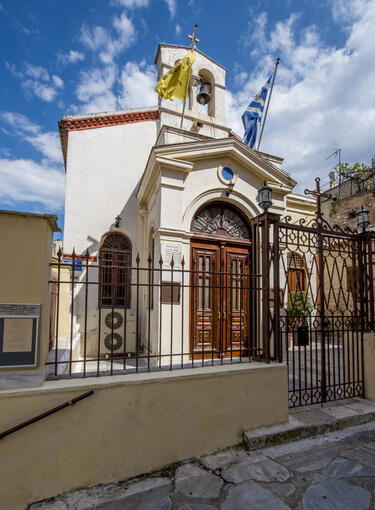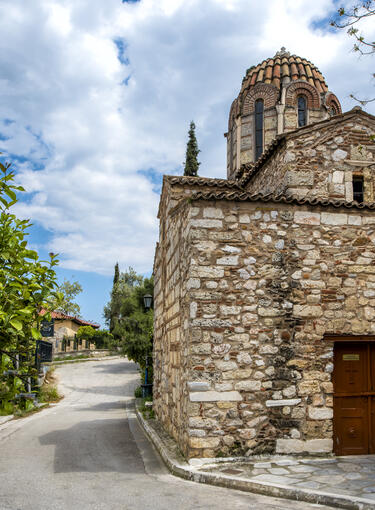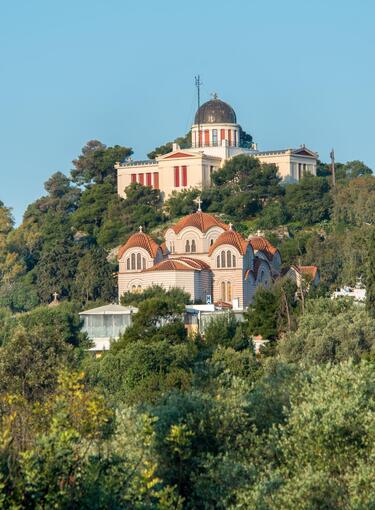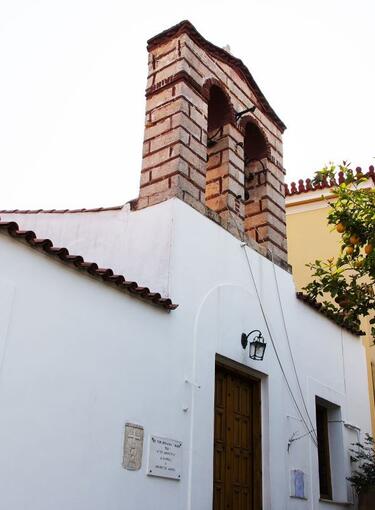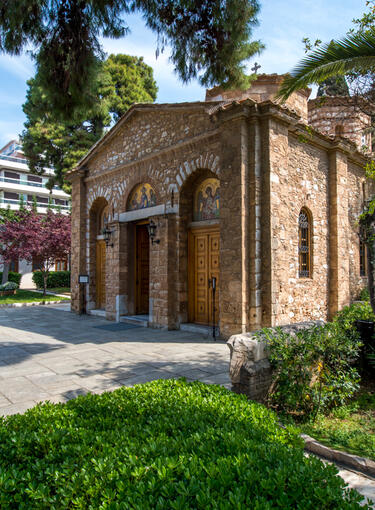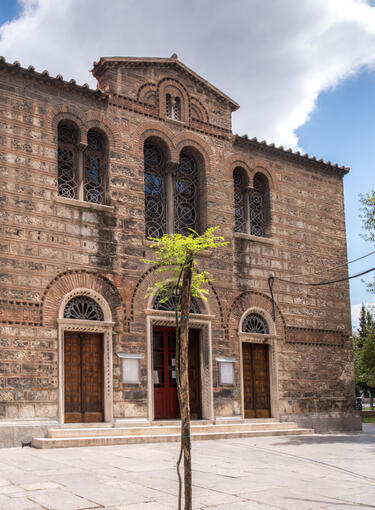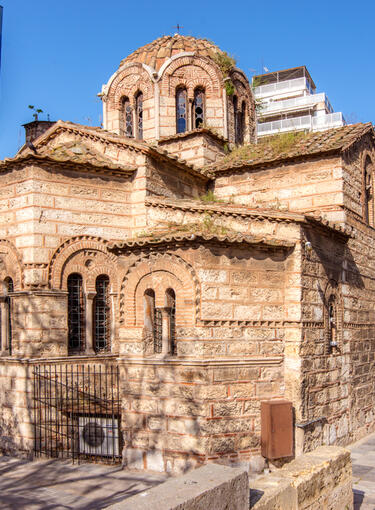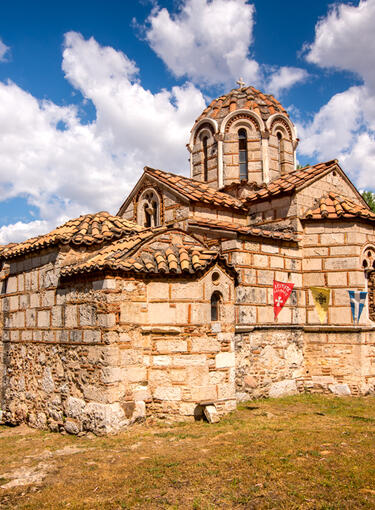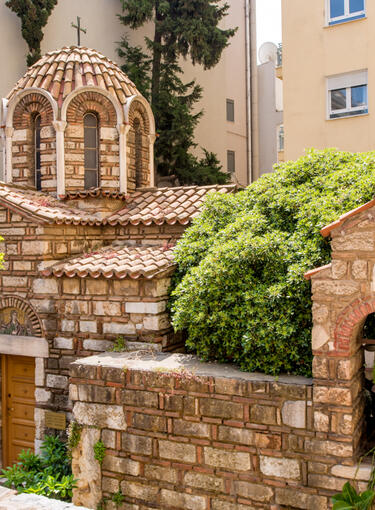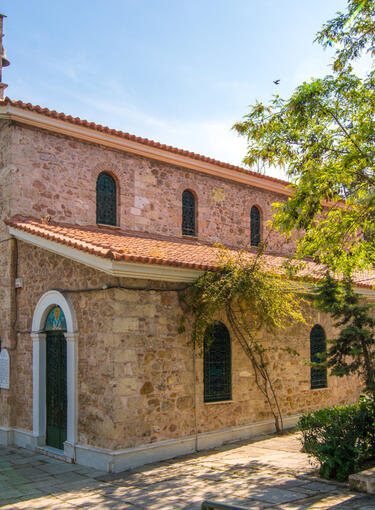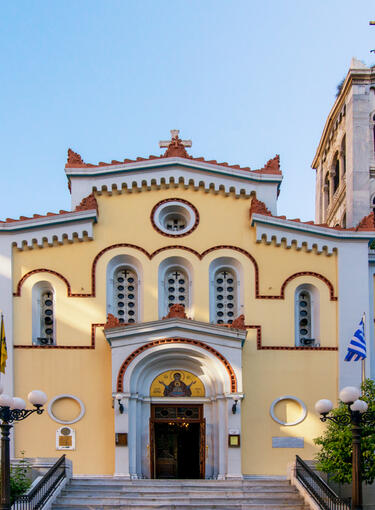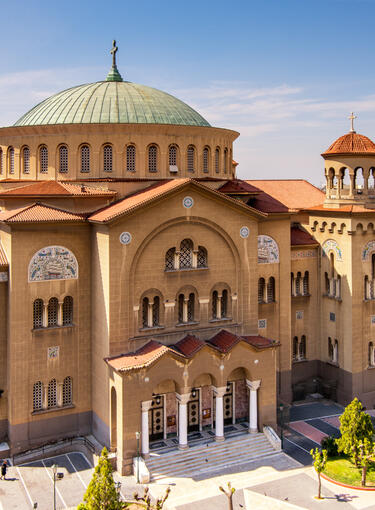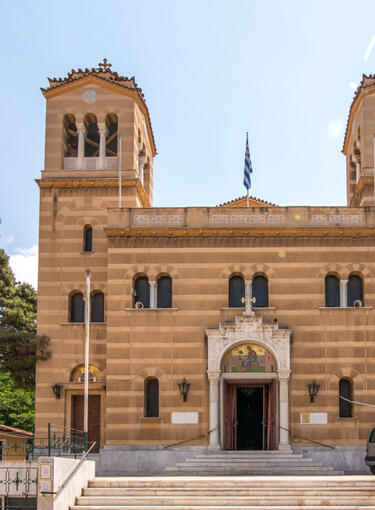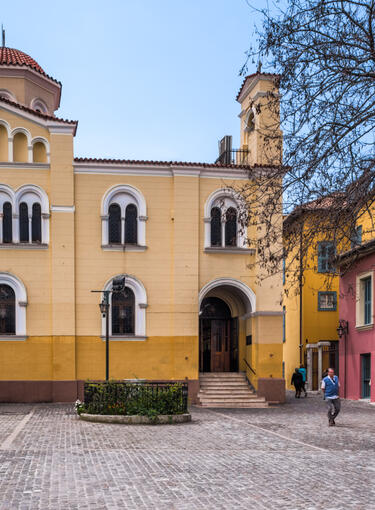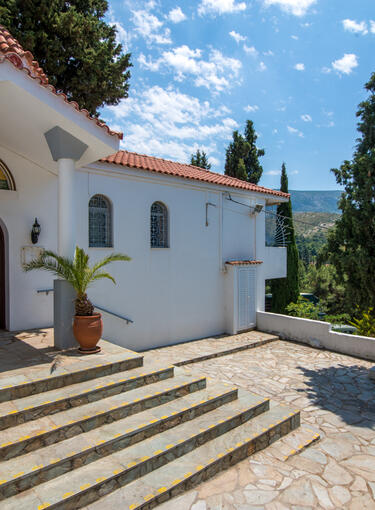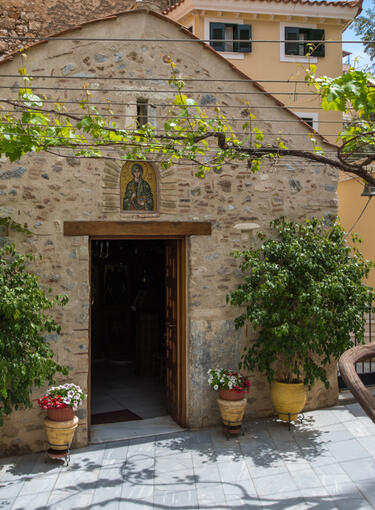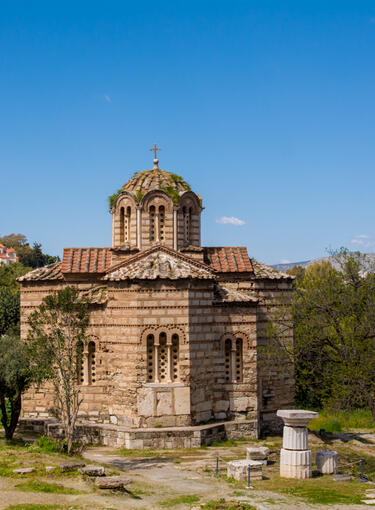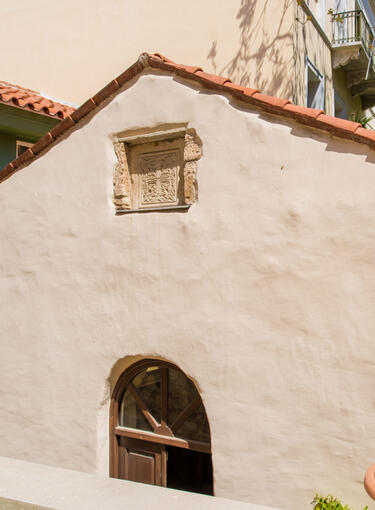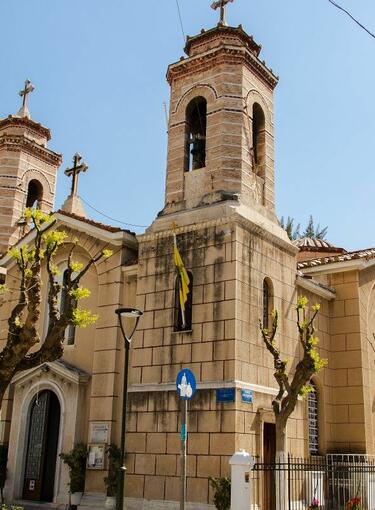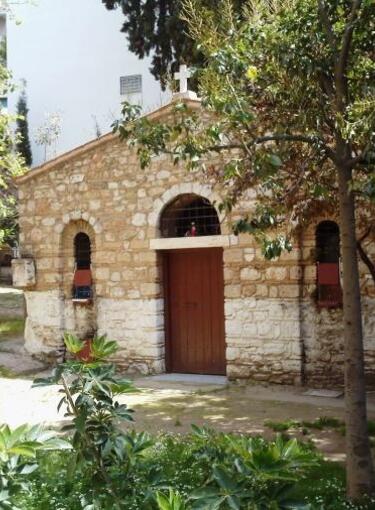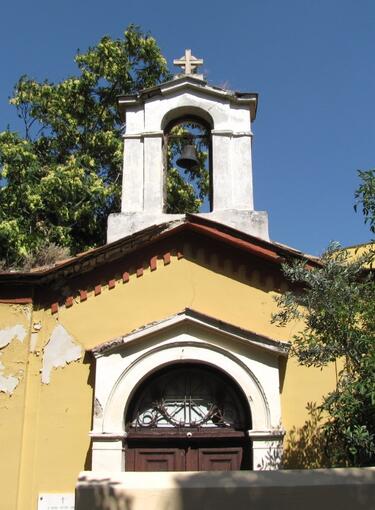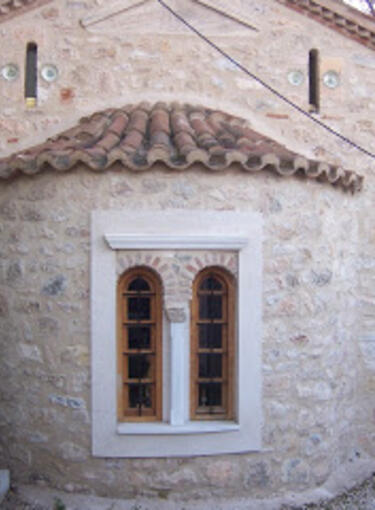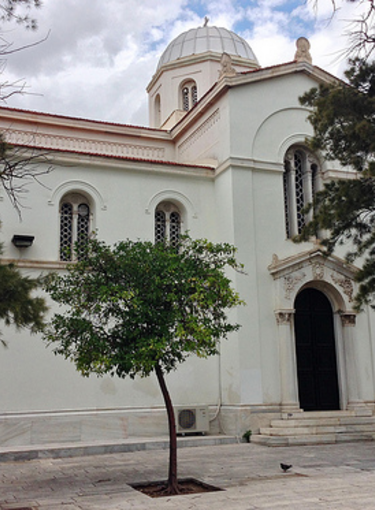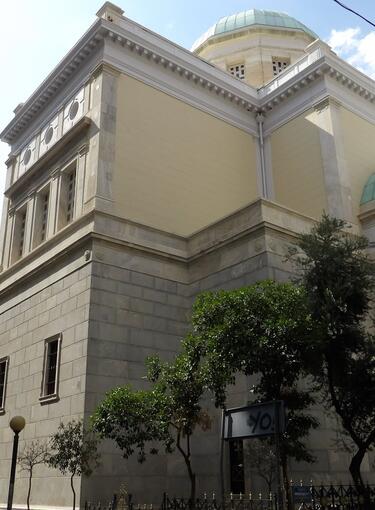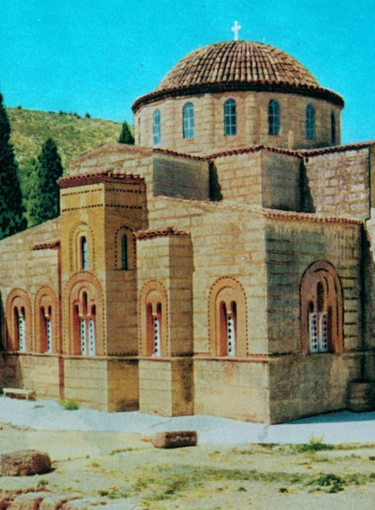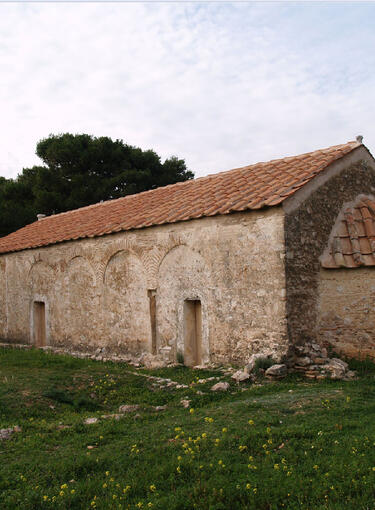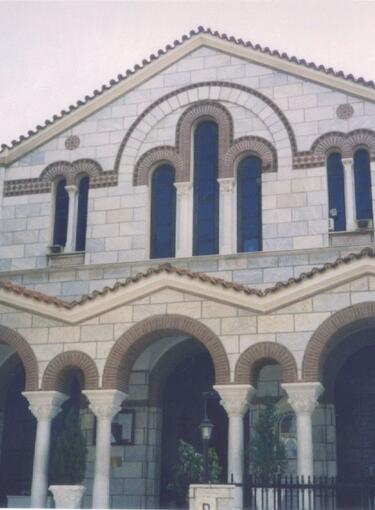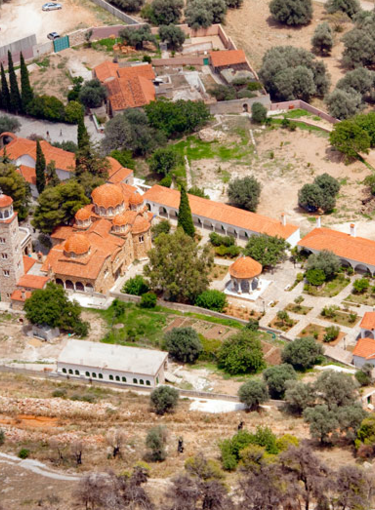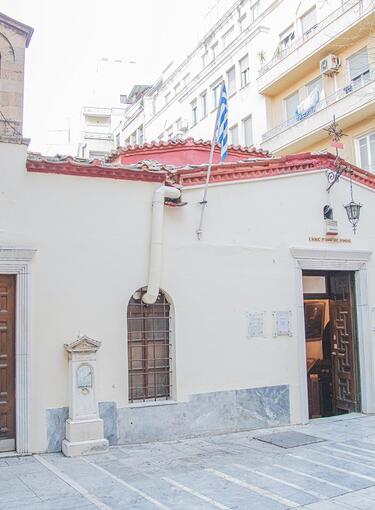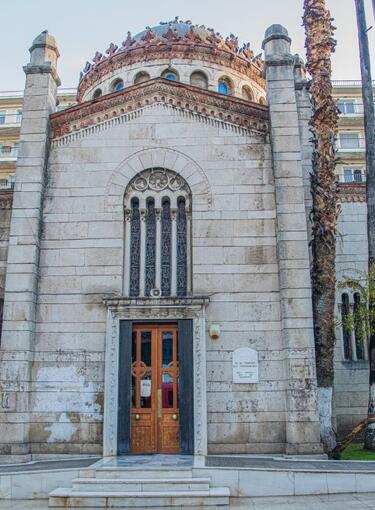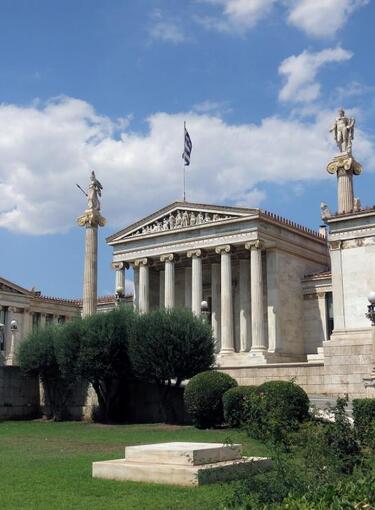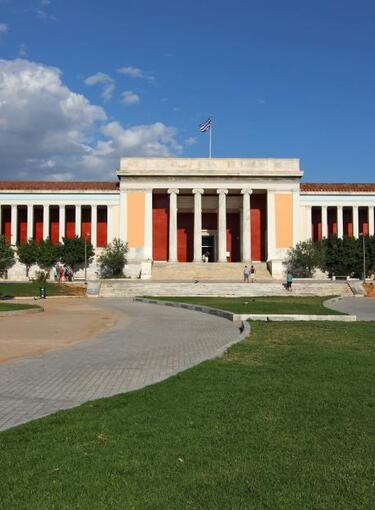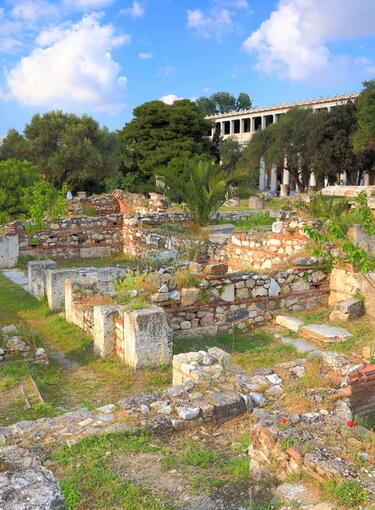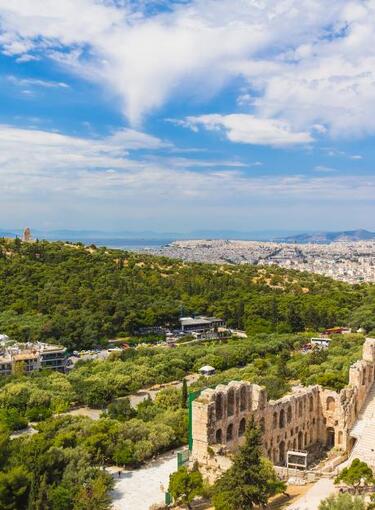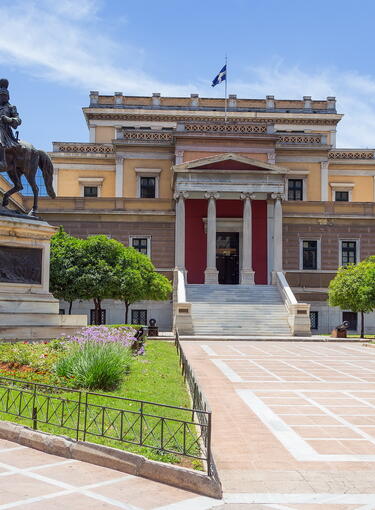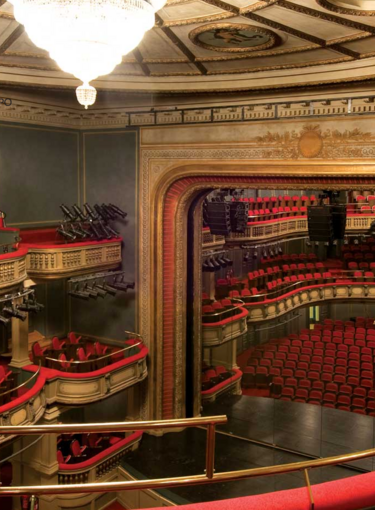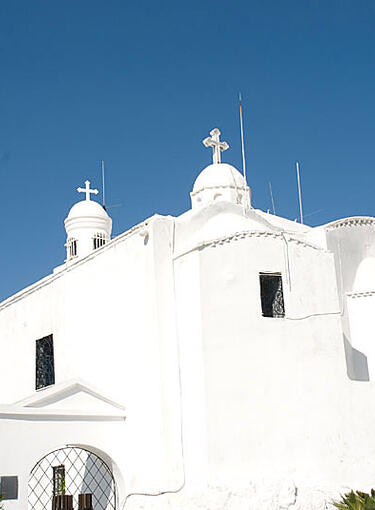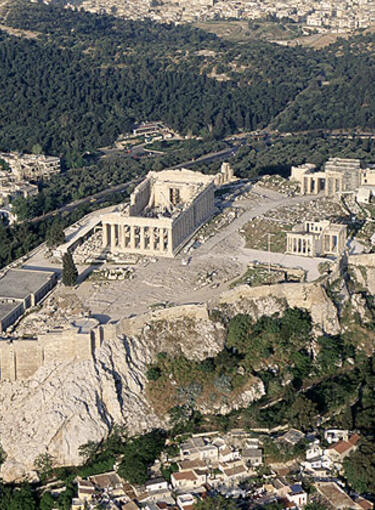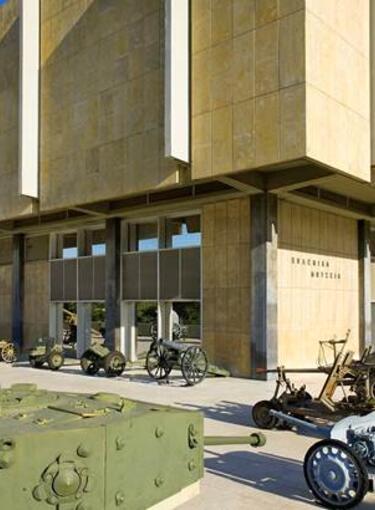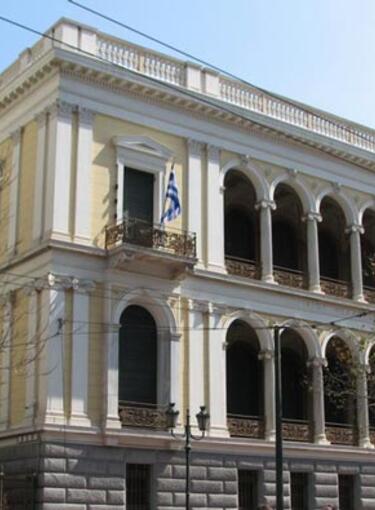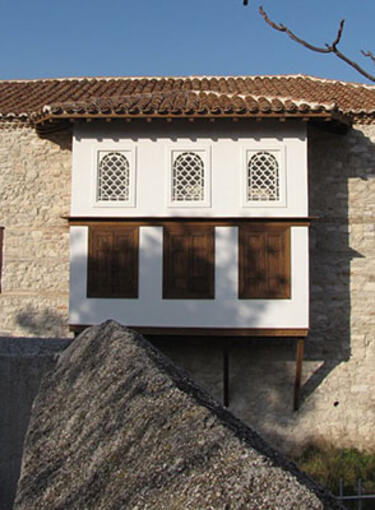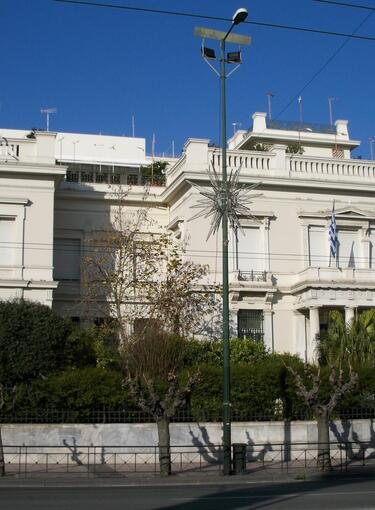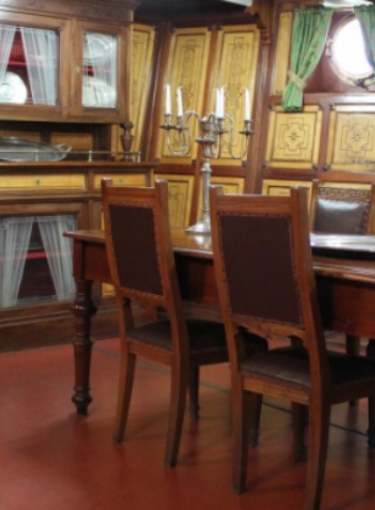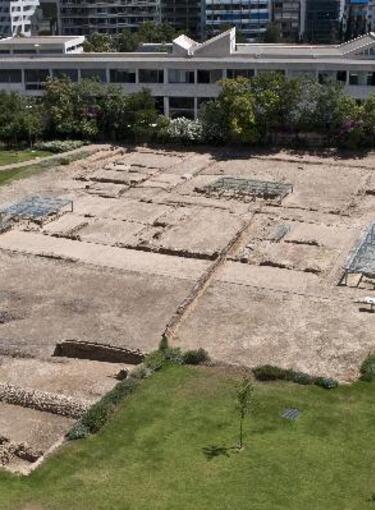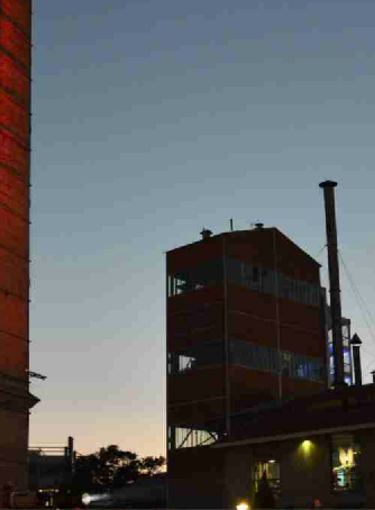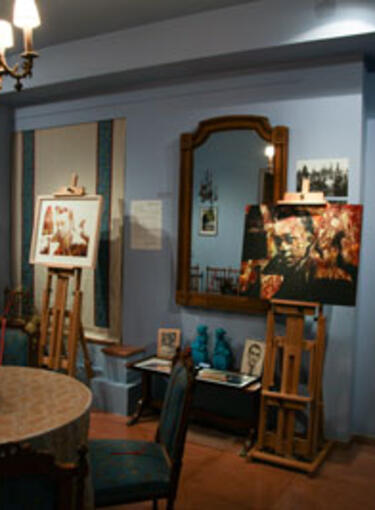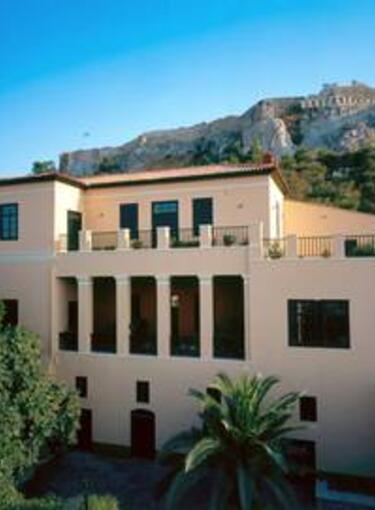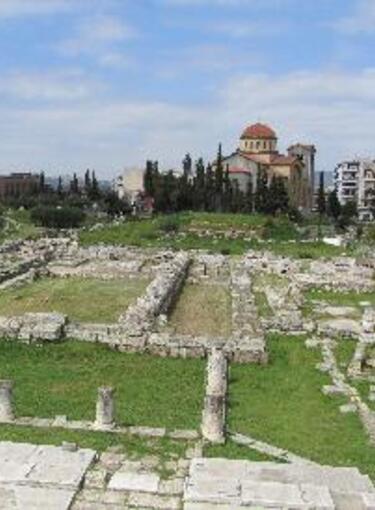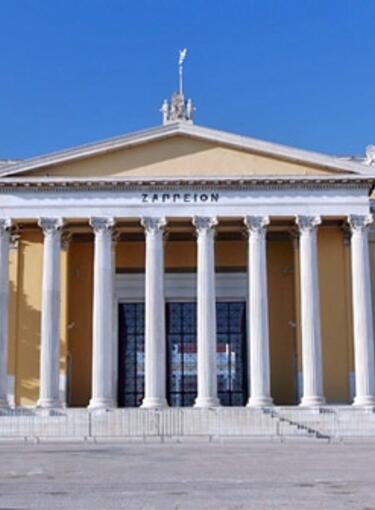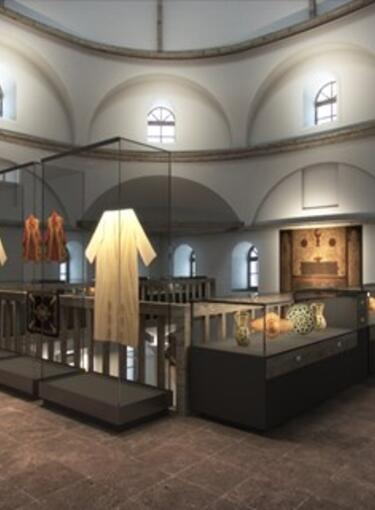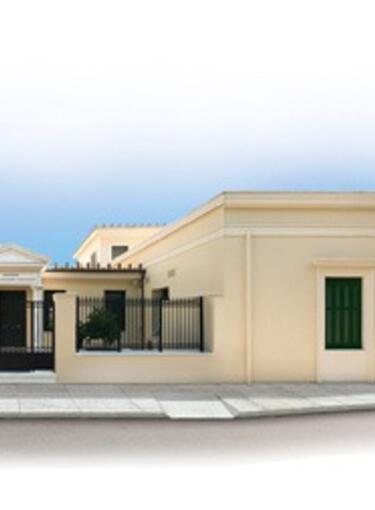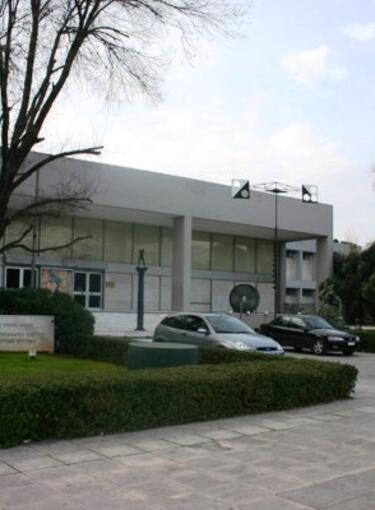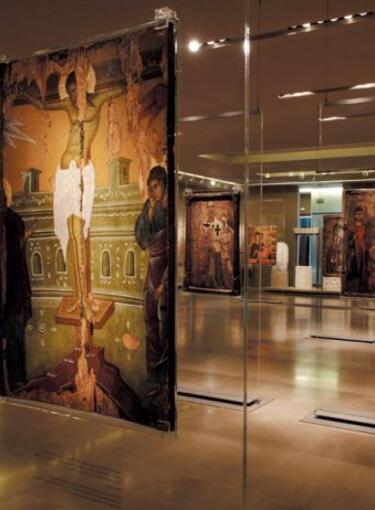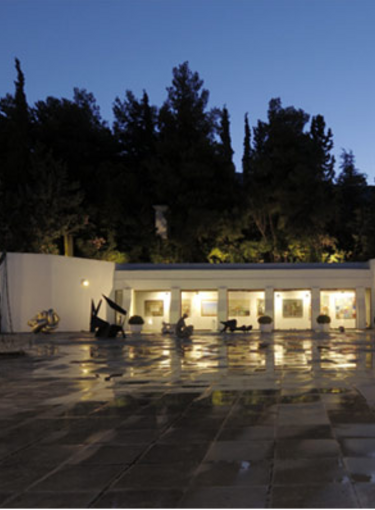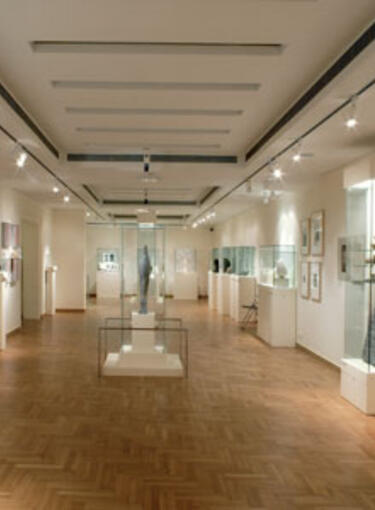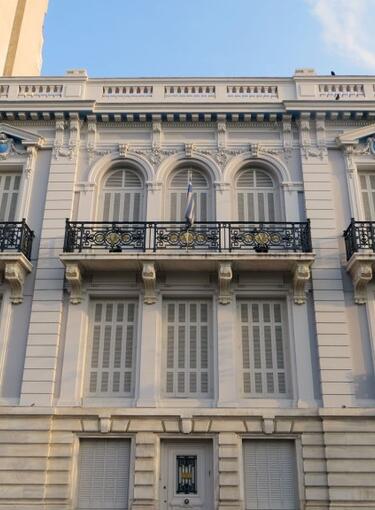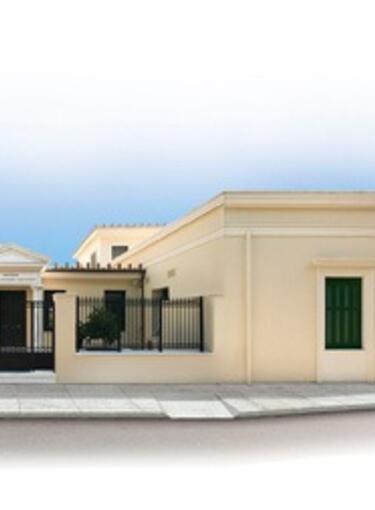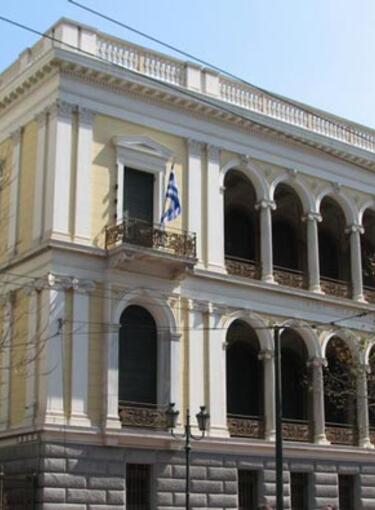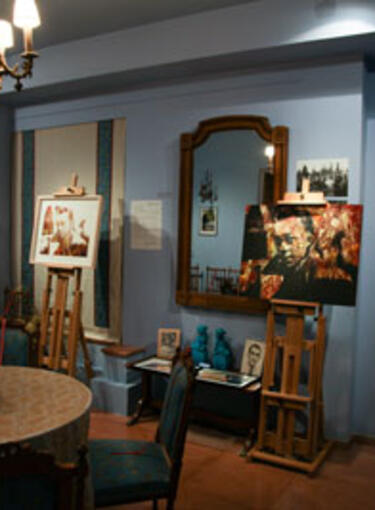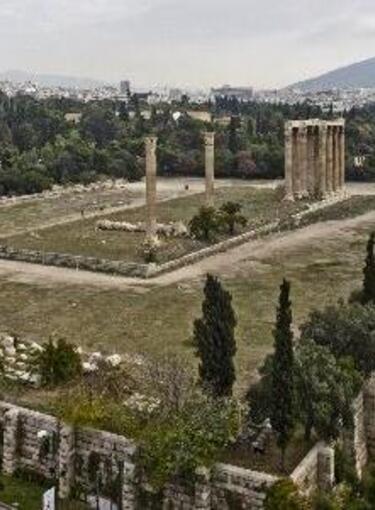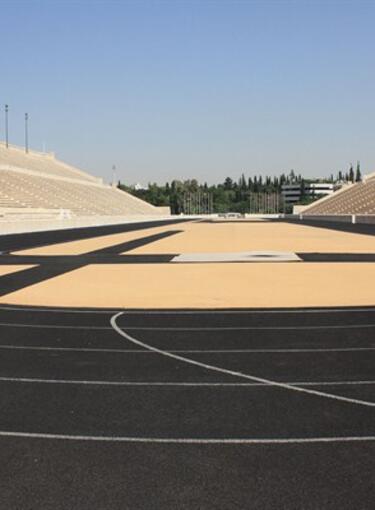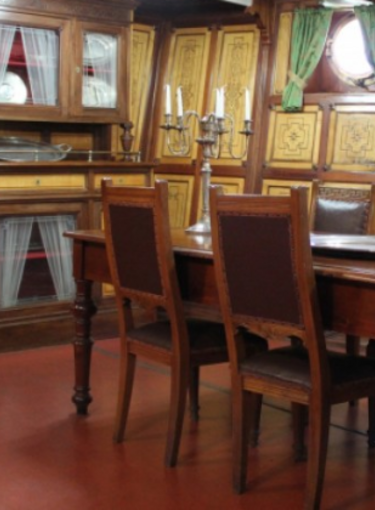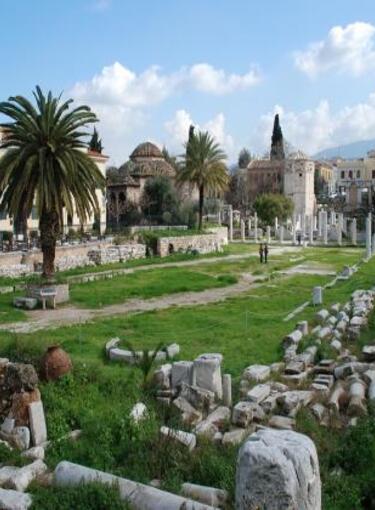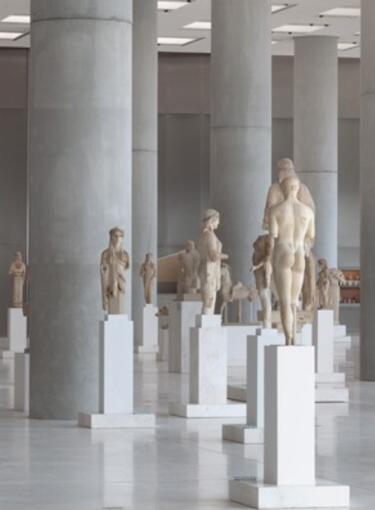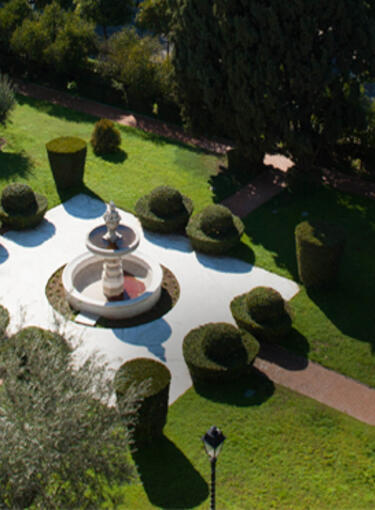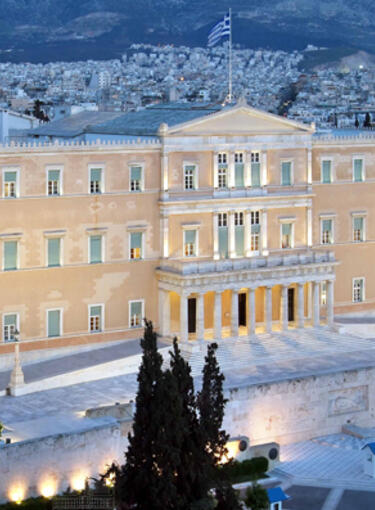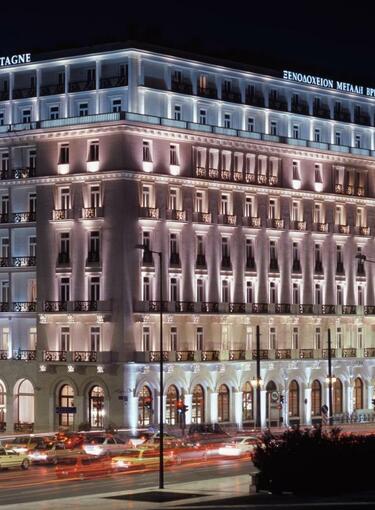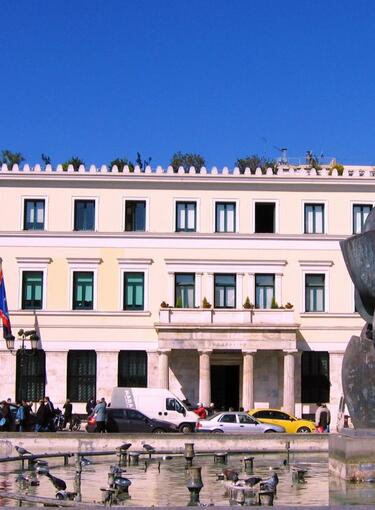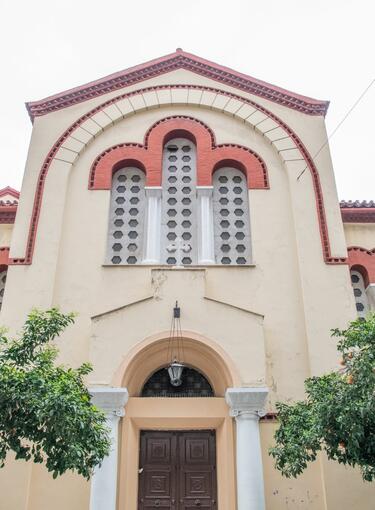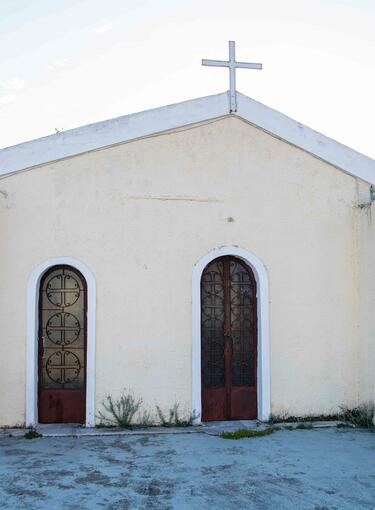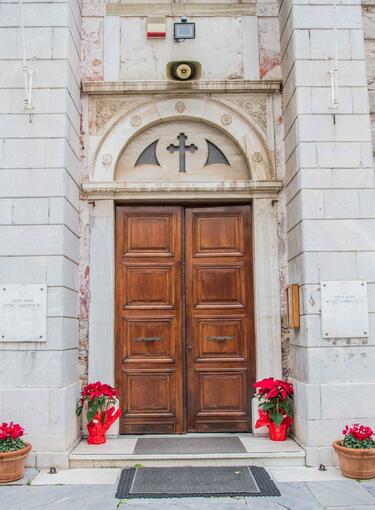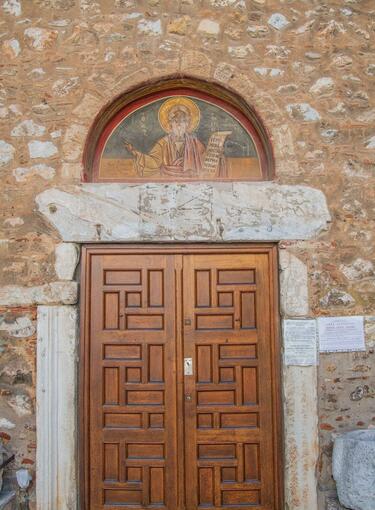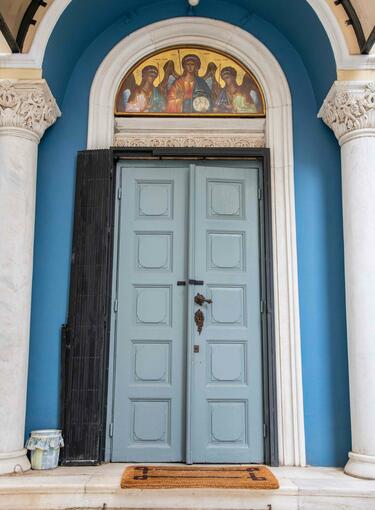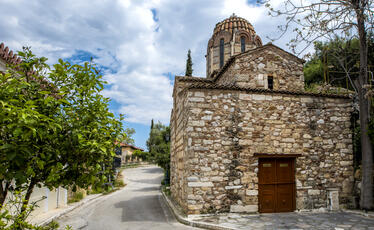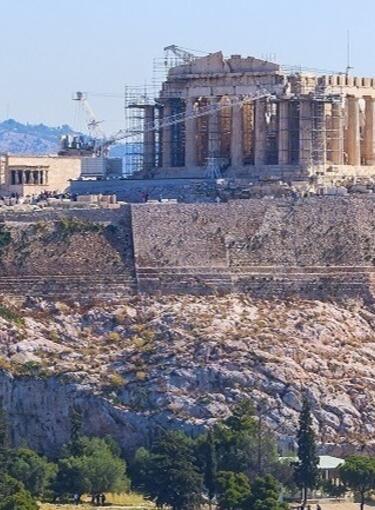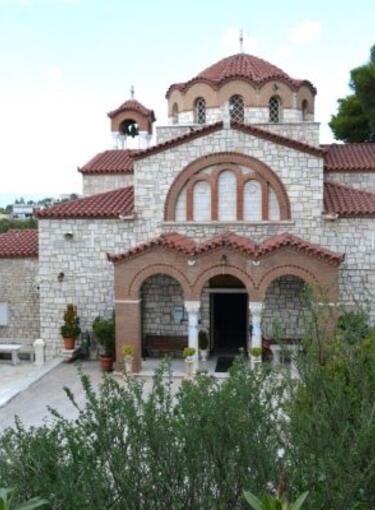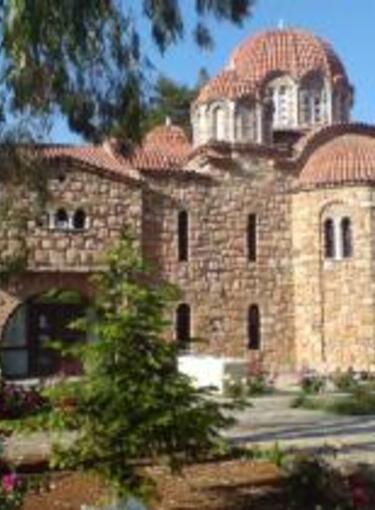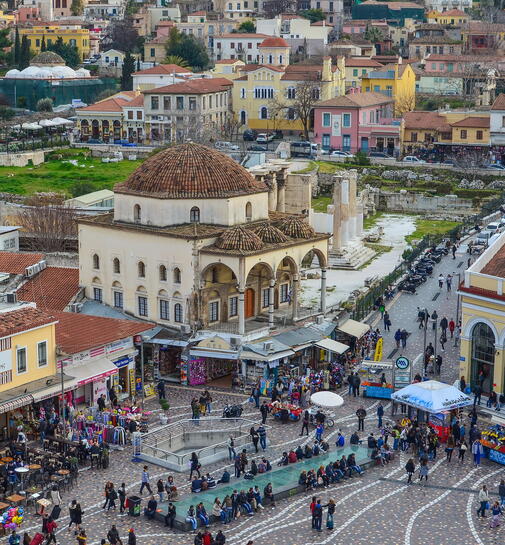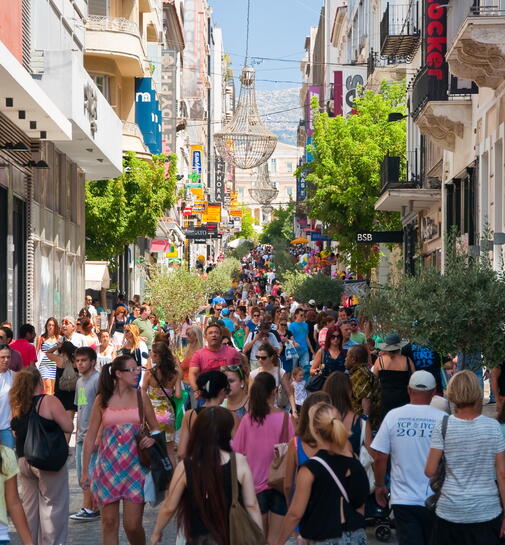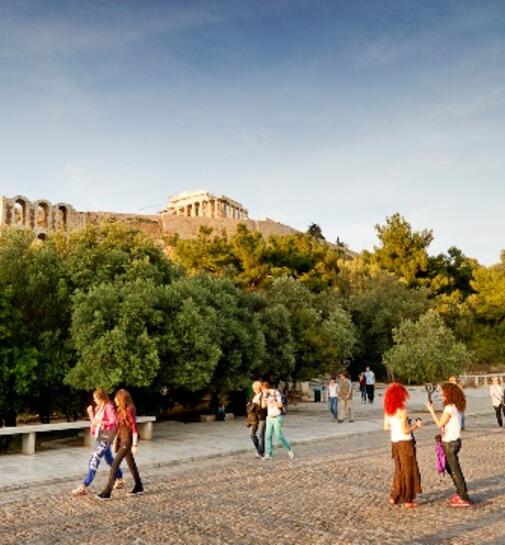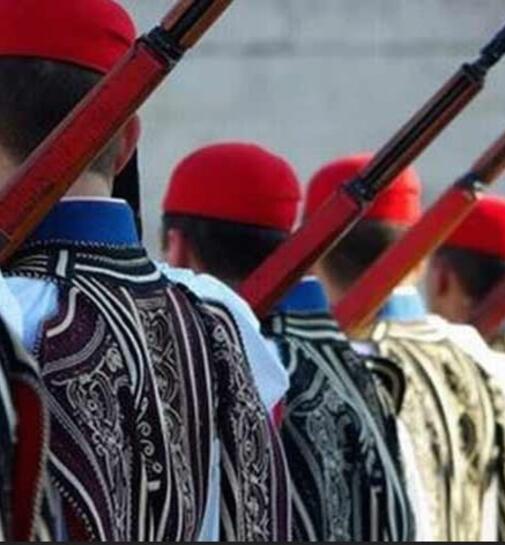In a unique wooded area, at the foothills of the hill of Philopappos, is the church of Agios Dimitrios.
It is a single-aisle vaulted church and dates from the period of the Turkish occupation.
According to the tradition, in 1658, on the eve of the saint’s celebration, when Yusuf, the Turkish commander of the Acropolis, wanted to bomb the church and the congregation with a loumbarda (large cannon) from the Propylaea. However, his plans were cancelled when a lightning struck and blew up the powder house on the Acropolis, resulting in his death. Due to this attempt with the loumbarda, the church was called Loumbardiaris.
To the church leads a beautiful paved path which has been constructed by the well –known architect D. Pikionis (1887-1968).
Pikionis was also responsible for the restoration works of the church which were carried out in 1955. On the exterior he added marble and ceramic decorative themes to the monument. In addition, he removed the newer wall paintings and as a result the older ones from the 18th century were revealed. The built screen mentions the kontakion (type of hymn) for the inauguration of churches.
Thanks to its beautiful location, a lot of young couples choose Agios Dimitrios Loumbardiaris for their wedding.
Saint Dimitrios Loumbardiaris
(Agios Dimitrios Loumbardiaris / the Bombardier)
Within a verdant site, at Dionysiou Areopagitou and Apostolou Pavlou Streets, at the foots of Filopappos hill, next to the remains of the ‘Dipylon over the Gates’, namely at the Southern gate of the ‘Diateichisma’ [transverse wall], of the walls constructed by the Athenians in the 4th century B.C. to defend themselves from the Macedonians, is located the iconic chapel of Saint Dimitrios known as ‘Loumbardiaris’ or ‘Bombardiaris’ [the ‘Bombardier’].
According to a historical tradition, which is preserved by Dimitrios Kampouroglou, in the times of the Ottoman Rule, the Christians continued to celebrate with piety the memory of Saint Dimitrios. In October 1658, the then Aga of Athens Yusuf planned to fire a cannon from the Propylae of the Acropolis on the church and the congregation which had assembled for the celebration with a ‘lombarda’, namely a large cannon. His plans were thwarted when a storm broke out and a lightning blew up the gunpowder storage at the battery of the Propylae, resulting in the demise of the Aga and his family. Ever since, the church assumed the name ‘Loumbardiaris’.
There is no agreement as to the time of the erection of the church. According to the one version the church was built in the era of the Ottoman rule and yet some scholars date the church at the 9th century AD. The one thing that is certain is that the original building suffered many changes in the course of centuries.
It is a vaulted, single–aisle basilica. At the northern and southern walls it has two blind arches and another two transverse arches, which buttress the semi-circular roof, which is covered with stone slabs.
Subsequently, the church extended westerly. In its current form, the church is a building of the 20th century. In 1955 restoration works were executed as well as works for the conservation of the church by the architect Dimitrios Pikionis. Pikionis addressed also the exterior form of Saint Dimitrios. He adorned the exterior walls with geometrical patterns constructed by an amalgam of various marble fragments and ceramics.
In 1987 began the cleaning and conservation of the murals, which was completed in 1992. During the course of the works, on the built templon the kontakion of the opening of doors ceremony of the 13th September was revealed written in Byzantine letters: ‘OYΡΑΝΟΣ ΠΟΛΥΦΩΤΟΣ Η ΕΚΚΛΗΣΙΑ ΑΝΕΔΕΙΧΘΗ ΑΠΑΝΤΑΣ ΦΩΤΑΓΩΓΟΥΣΑ ΤΟΥΣ ΠΙΣΤΟΥΣ, ΕΝ Ω ΕΣΤΩΤΕΣ ΚΡΑΥΓΑΖΟΥΜΕΝ ΤΟΥΤΟΝ ΤΟΝ ΟΙΚΟΝ ΣΤΕΡΕΩΣΟΝ, ΚΥΡΙΕ’ [‘AS SKY REPLETE WITH LIGHTS EMERGED THE CHURCH ENLIGHTENING THE FAITHFUL, WHEREIN WE STANDING EXCLAIM: SECURE THIS HOUSE, OH LORD’].
The iconography of the church is dated at 1735. At many points the murals show gaps and are not preserved in a good condition. At the right side of the templon are depicted Jesus Christ, John the Baptist, Saint Spyridon and the Athenian brothers Sofronios and Varnavas. At the left side, one observes the Theotokos and Saint Dimitrios the Myroblete, on an apse.
The Holy Altar is based on an ancient column, while another two columnettes are situated in the courtyard of the main entrance. On the one column is inscribed in relief uncial writing: ‘ΒΕΡΕΝΙΚΗ ΙΣΙΔΩΡΟΥ ΜΗΛΙΣΙΑ ΜΑΙΝΑΝΔΡΟΥ ΑΙΘΑΛΙΔΟΥ ΓΥΝΗ [VERONIKI OF ISIDOROS MILETIAN THE WIFE OF MENANDROS ETHALIDIS]’ and on the other column: ‘ΠA(…)AΣ ΔΗΜΑΡΧΟΥ ΠΑΛΛΗΝΕΩΣ ΓΥΝΗ’ [‘PA(…)AS THE WIFE OF DIMARCHOS PALLINEFS’].
Informations
Additional
Date:
16th century
Season:
Post-Byzantine
Holy Metropolis:
Archdiocese of Athens
Under the Supervision of:
Ephorate of Antiquities of Athens
Address:
Dionysiou Areopagiti & Ap. Pavlou, Filopappou
Access:
Metro Acropolis Station


